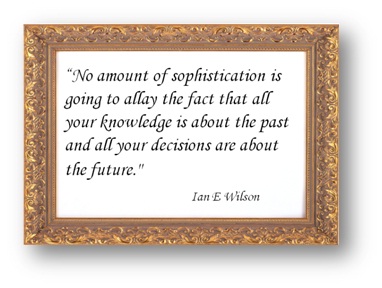I secretly love the moment when the air stewardess utters those magic words:
"as we prepare for take-off, please turn off all electronic devices..."
Actually, I think the whole plane breathes a collective sigh of relief. Fifteen minutes of enforced separation from the electronic world of work.
Fifteen minutes at the downtime oasis between the instant your iPhone/Blackberry goes off, and the moment your laptop is allowed to be switched on. We're so always-on, info-stimulated, response-charged that it's a bit of a shock to the system. Once I've leafed through the in-flight magazine and perused the safety card, I confess I sometimes find myself nodding off!
Fifteen minutes. That’s the time typically allocated for After Action Reviews (AARs), at least for informal AARs, pioneered by the US Army and now a widely used knowledge management approach. Let’s take a deeper look at this classic, simple process and see why it provides such a welcome quarter of an hour of reflection and learning for a team.
Firstly, the name can create a level of confusion. Informal AARs take place immediately after an event or activity and are designed to provide a safe, honest, space for a team to review performance and identify the learning. In that respect, they are really a tool for learning-whilst-doing. You wouldn’t use this kind of AAR to review a major project in order to generate detailed narrative, lessons and recommendations for the next team. There are other KM methods in your toolbox for those situations – such as Project Reviews, Retrospects and Sensemaking techniques.
The climate for an AAR is important. The US Army describe those fifteen minutes as a “rank-free zone”. University College London’s “Learning Hospital” (to be featured in a future edition of Inside Knowledge), which is training hundreds of its staff as AAR facilitators describe the technique as making it possible to “speak the truth to power”. The ubiquity of AARs in the hospital make it safe for a junior technician to comment on and challenge the actions of the most eminent surgeon, because everybody understands the need for a climate of honesty when patients’ lives are at stake.
Having clarified the name and the climate, let’s take a look at the four simple questions which comprise an AAR. Simple enough to be remembered without a crib-sheet, and familiar enough that people know exactly where they are in the process.
Question one:“What was supposed to happen?” focuses on the facts This may sound surprising, but sometimes it can be difficult to even get agreement on the answers to this question!
Question two: “What actually happened?” – the US Army calls it “ground truth” – again, this is purely a statement of facts about what happened – not an exchange of opinions. Sometimes there are unexpected, positive things which happen in addition to the expected outcome – note these down too, as you might want to repeat those elements in the future.
Question three:“Why was there a difference?”. This is the time when the team can move from stating facts to giving their opinion as to the reasons for any differences; the facilitator uses the time wisely to ensure that contributions are made from as many team members as possible, and discussed where necessary.
Question four: “What can we learn from this?”. This is the most important question, as it is the one most likely to identify what needs to change. It moves the team from reflection to action, and make a difference to the next time they attempt a similar task.
So that’s it. Four simple questions, addressed rapidly by the team with the facilitator (a team member) capturing a brief record on a flipchart to keep the focus on shared opinions and actions. All in all, a straightforward technique. The power of AARs comes in the structure; the slowing-down effect of the four questions. Let’s face it, as intelligent professionals, we like to think we have a pretty good idea about what the learning points are, even before we’ve discussed it. AARs are designed to stop people just like us from bypassing steps i, ii and iii and jumping to conclusions as to what the learning was, without having verified that there is agreement about what actually happened.
In our always-on world, where we re-tweet things around the globe before we’ve even read them, and connect with people we barely know – fifteen minutes to slow down, reflect and think – together - is invaluable. Now... where did that duty-free magazine go?
Taken from the Consulting Collison column in the next edition of Inside Knowledge








 Urinals. Do you spend much time looking at them?
Urinals. Do you spend much time looking at them?